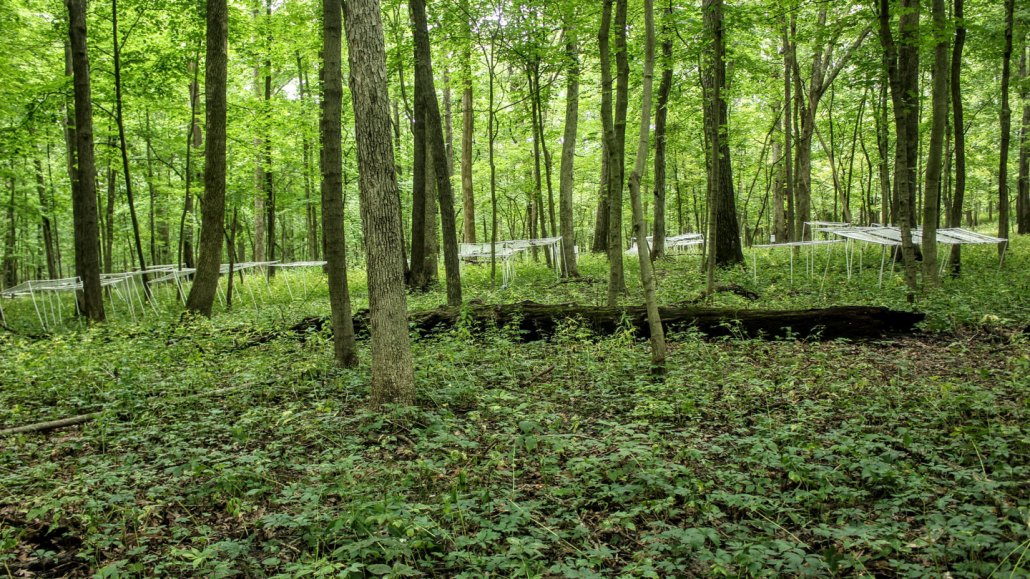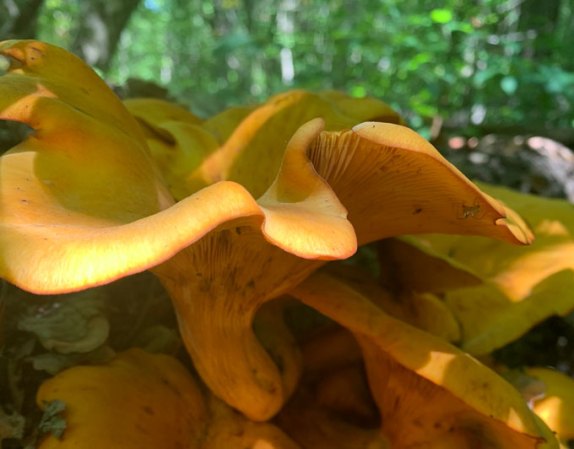
This field site in central Illinois represented a region that’s becoming too hot for native trees to handle. Transparent sheets of plastic, seen in the background, diverted rainfall away from some saplings to mimic drought.
Cassandra Allsup
- More than 2 years ago
Microbial stress can be a boon for young trees.
Saplings grown in soil microbes that have experienced drought, cold or heat are more likely to survive when faced with those same conditions, researchers report in the May 26 Science. And follow-up tests suggest that the microbes’ protective relationship with trees may linger beyond initial planting.
The team’s findings could aid massive tree planting efforts by giving new saplings the best chance of survival over the long run, says Ian Sanders, a plant and fungal ecologist at the University of Lausanne in Switzerland. “If you can control which microbes are put onto tree saplings in a nursery, you can probably help to determine whether they’re going to survive or not when they’re transplanted to the field.”
As climate change pushes global temperatures ever higher, many species must either adapt to new conditions or follow their ideal climate to new places (SN: 1/25/23). While forests’ ranges have changed as Earth’s climate has warmed and cooled over hundreds of millions of years, the pace of current climate change is too fast for trees to keep up (SN: 4/1/20).
Trees live a long time, and they don’t move or evolve very quickly, says Richard Lankau, a forest ecologist at the University of Wisconsin–Madison. They do have close relationships with fast-adapting soil microbes, including fungi, which can help plants survive stressful conditions.
But it was unclear whether microbes that had previously survived various climates and stresses might give inexperienced baby trees encountering a changing climate a leg up. With friends in the soil, “trees might have more tools in their toolkit than we give them credit for” to survive tough conditions, Lankau says.
For the study, Lankau and fellow ecologists Cassandra Allsup and Isabelle George — both also at UW–Madison — collected soil from 12 spots in Wisconsin and Illinois that varied in temperature and amount of rain. The team then used the soils to plant an abundance of 12 native tree species, including white oak (Quercus alba) and silver maple (Acer saccharinum). Overall, “we had thousands of plants we were monitoring,” Allsup says.
Those saplings grew in the soils in a greenhouse for two months before being transplanted in one of two field sites — one warm and one cold. To simulate drought, some trees in each spot were placed under transparent plastic sheets that blocked direct rainfall.
One site in northern Wisconsin was at the northern edge of the trees’ range and represented how trees might take root in a new area that’s getting warm enough for them to grow. There, trees planted in soil containing cold-adapted microbes better survived Wisconsin’s frigid winter temperatures. Plants that faced drought in addition to the cold, on the other hand, didn’t have the same benefit.
The other location, set up in central Illinois, was designed to represent a region where the climate is getting too hot or dry for the tree species to tolerate. Saplings grown in soil with microbes from arid spots were more likely to survive a lack of rain. But those grown in soils with heat-tolerant microbes were only slightly more likely to survive when they received normal rainfall.

Resident species already living in the area didn’t outcompete all of the transplanted microbes. Newly introduced fungi persisted in the soil for three years, a sign that any protective effects might last at least that long, the team found.
It’s still unclear which microbes best aid the trees. Analyses of microbes living in the soil hinted that fungi that live inside plant roots may better help trees survive drought. Cold-adapted soils seem to have fewer fungal species. But soils also contain bacteria, archaea and protists, Sanders says. “We don’t know what it is yet that seems to affect the plant survival in these changing climates.”
Determining which microbes are the important ones and whether there are specific conditions that best suit the soil is next up on the list, Allsup says. For example, can dry-adapted soil from Iowa help when planting trees in Illinois? “We need to think more about soils and combinations and [transplant] success… to actually save the forest.”
One caution, Sanders says, is that transporting microbes from one place to another en masse could bring the bad along with the good. Some microbes might be pathogens in the new place where they’re transplanted. “That’s also a big danger.”







